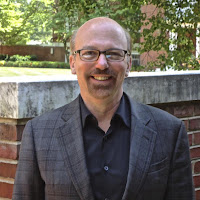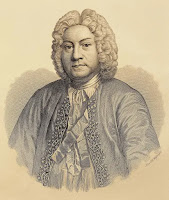Vocal Music
- Wondrous Love – Steve Pilkington, arr.
Instrumental Music
- Kyrie. Dialogue on the trompette and chromhorne – François Couperin (1668-1733)
- Kyrie. Fugue on the jeux d'Aanches – François Couperin
- Kyrie. Recit de chromhorne – François Couperin
Congregational Music (all hymns from The Hymnal 1982 with the exception of those marked “R” which are from Renew.)
- Hymn 411 - O bless the Lord, my soul (ST. THOMAS (WILLIAMS))
- Hymn R90 - Spirit of the living God (IVERSON)
- Hymn 143- The glory of these forty days (ERHALT UNS, HERR)
- Hymn 314 - Humbly I Adore thee (ADORO DEVOTE)
- Hymn 715 - When Jesus wept (WHEN JESUS WEPT)
- Hymn 495 - Hail, thou once despised Jesus! (IN BABILONE)
- Psalm 130 - Tone IIa
Wondrous Love
Sometimes nothing can beat a simple, plaintive melody for its beauty. Such is my opinion of the Southern folk hymn, What wondrous Love Is This? In the version the choir sings this week, you never hear the voices in more than two-part harmony, and that is when they are singing in canon (The men echoing the women four beats later.) Their singing is accompanied on the piano with a flowing, eighth-note piano part.
 It is the perfect hymn to sing during the Lenten season. (The congregation gets a chance to sing it on Maundy Thursday.) "What Wondrous Love Is This" captures our attention right from the beginning with its simplicity and persistence – "What wondrous love is this" sung three times. This repetition is not the sign of a weak poet who has a narrow range of expression, but a fellow traveler who has experienced profoundly the sacrificial love of Christ and can only express again and again – "What wondrous love is this."
It is the perfect hymn to sing during the Lenten season. (The congregation gets a chance to sing it on Maundy Thursday.) "What Wondrous Love Is This" captures our attention right from the beginning with its simplicity and persistence – "What wondrous love is this" sung three times. This repetition is not the sign of a weak poet who has a narrow range of expression, but a fellow traveler who has experienced profoundly the sacrificial love of Christ and can only express again and again – "What wondrous love is this."
The arranger, Steve Pilkington, serves on the faculty of Westminster Choir College in Princeton, N.J. as Associate Professor of Sacred Music. He also oversees all the music ministries at Christ Church United Methodist in New York City, where he has been Director of Music and Organist since 1994.

No comments:
Post a Comment
Note: Only a member of this blog may post a comment.